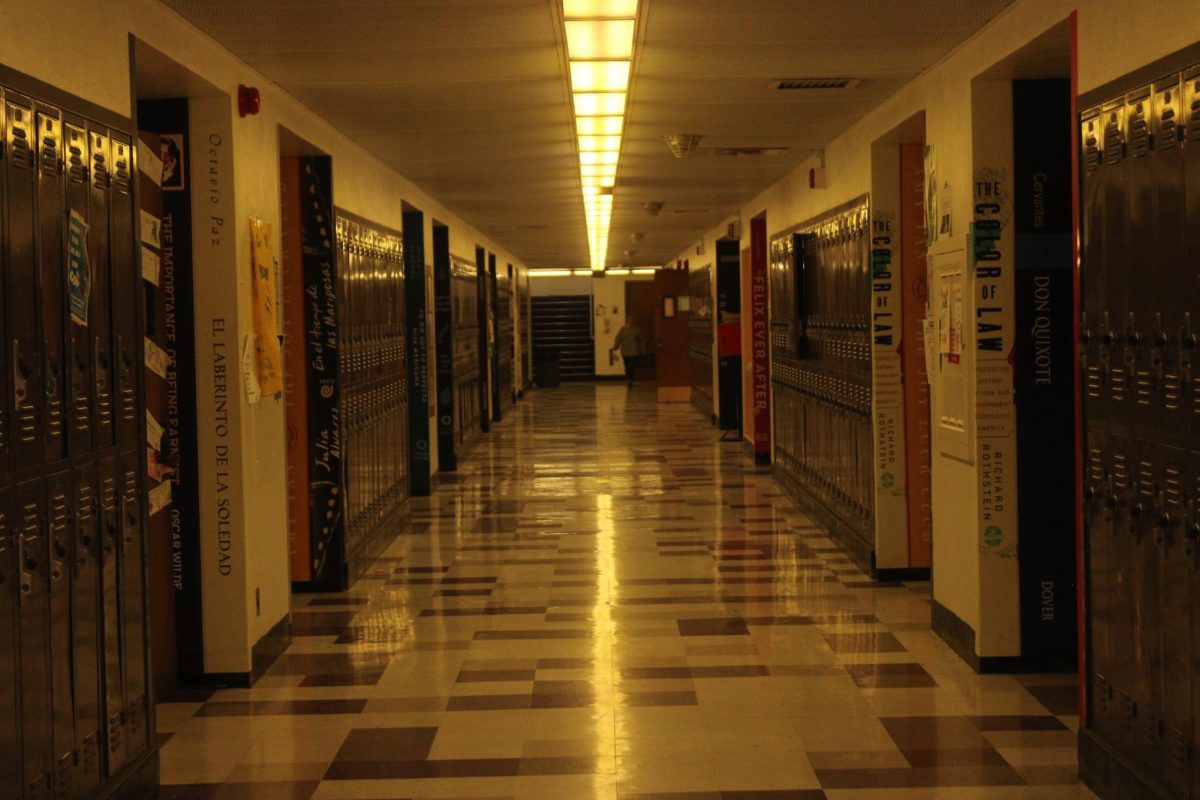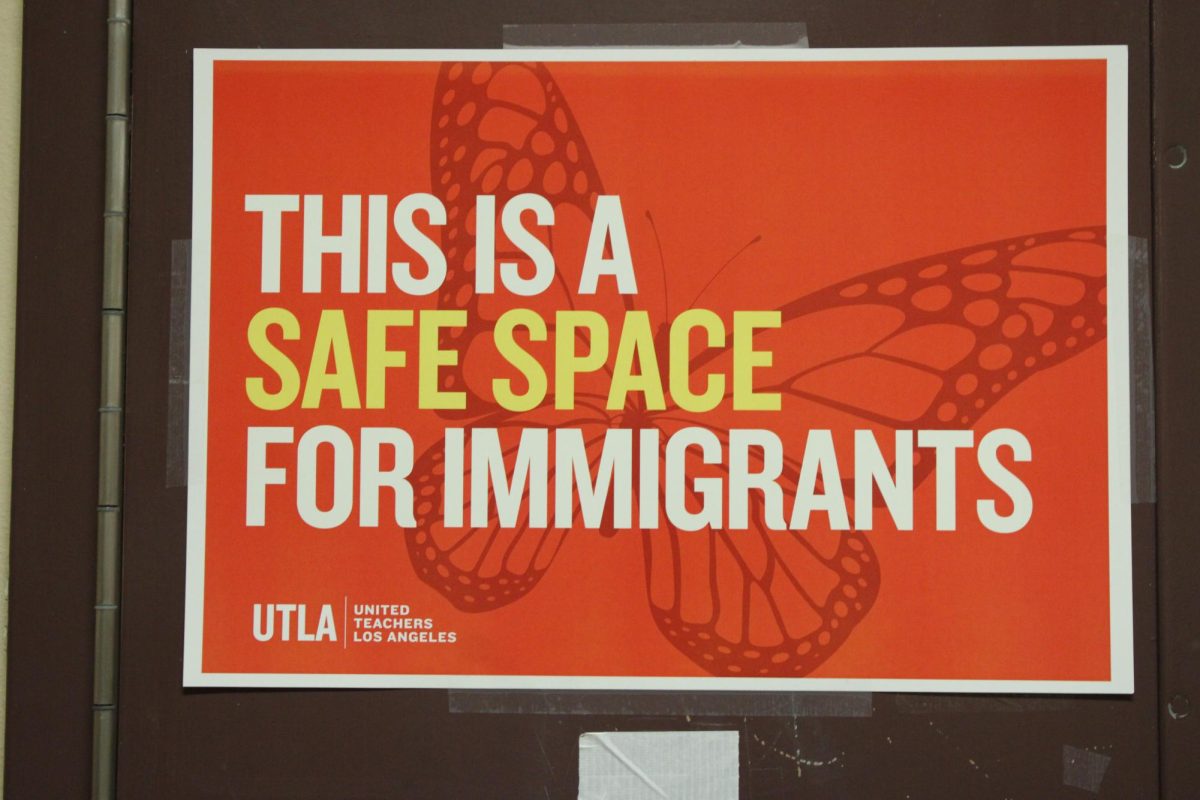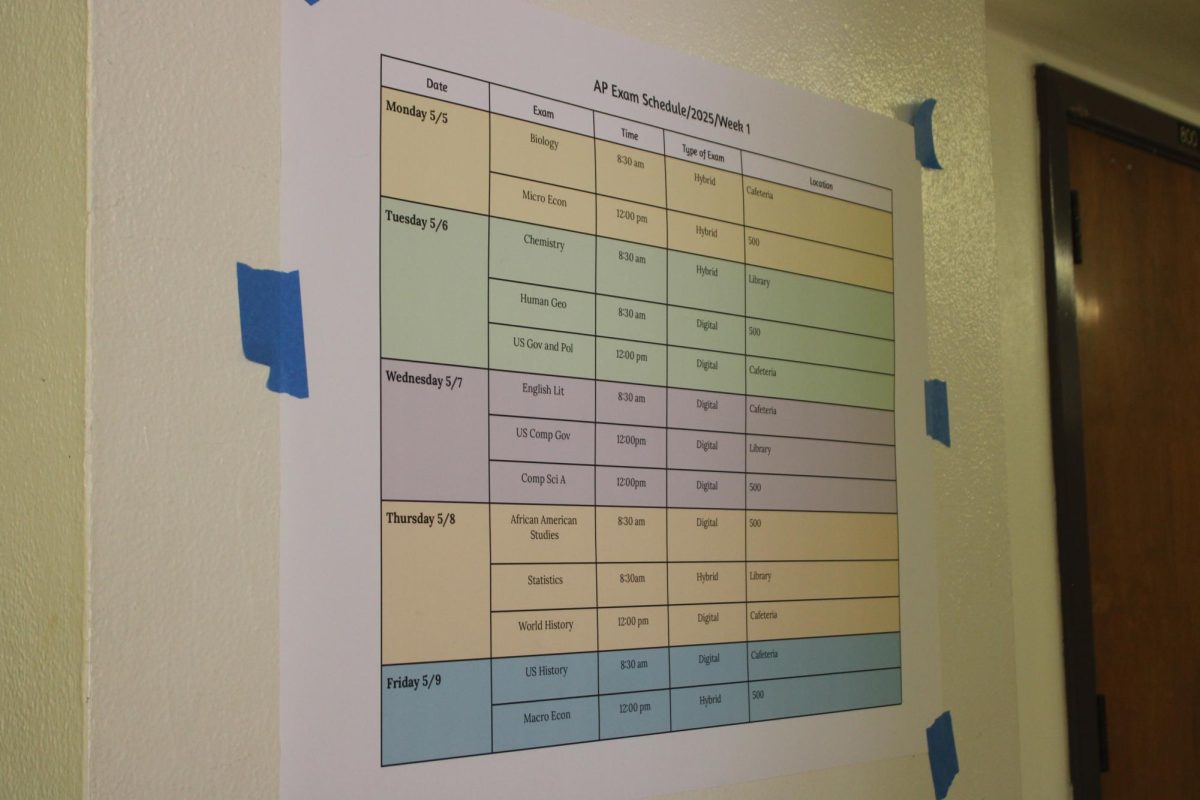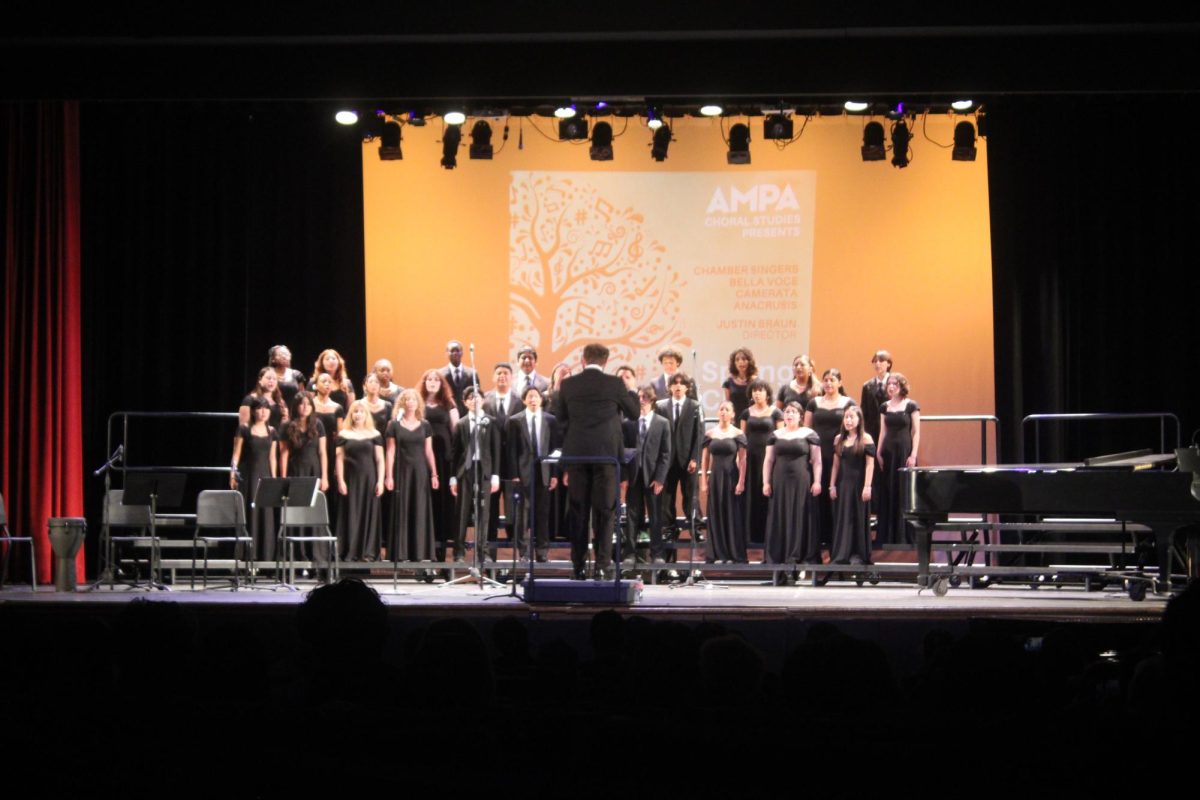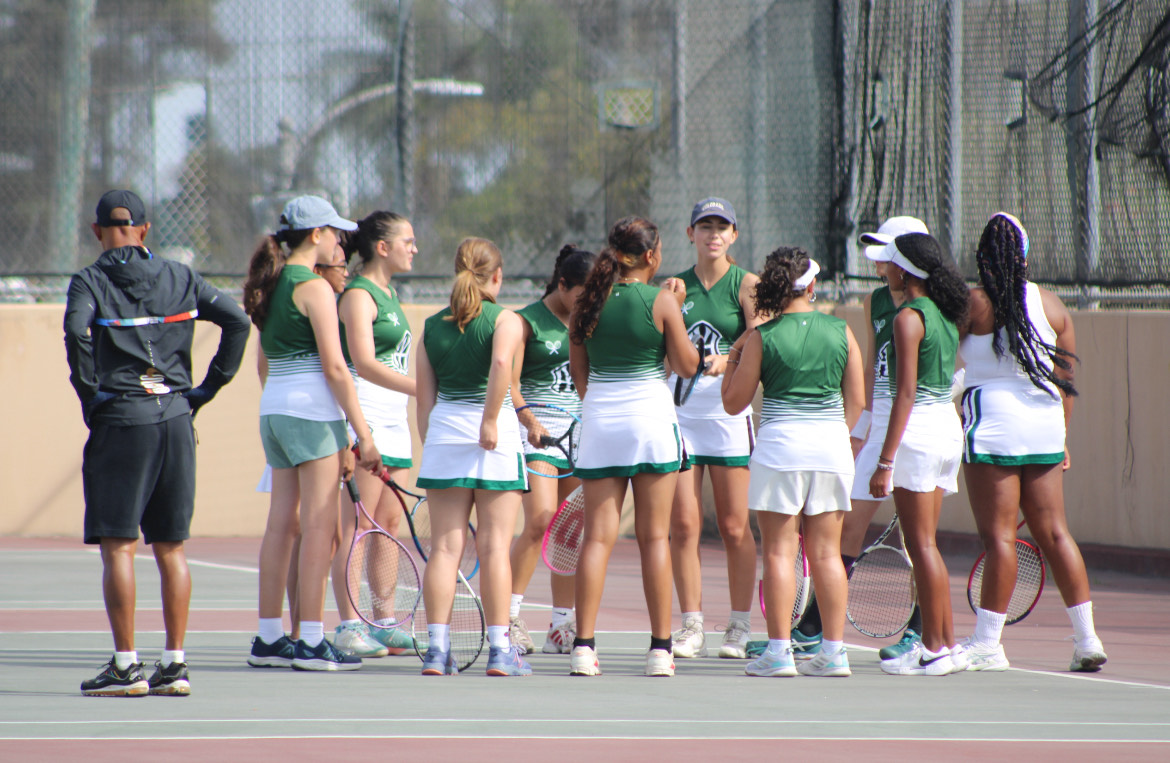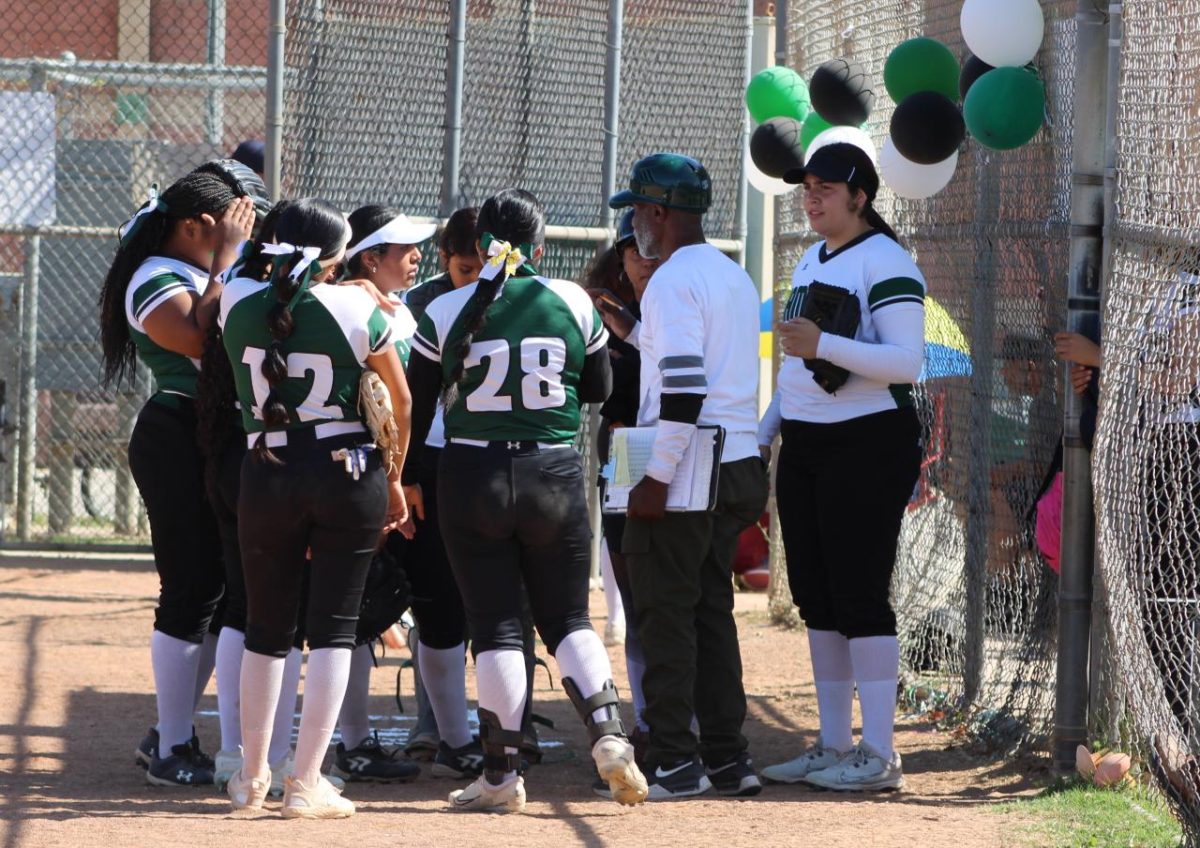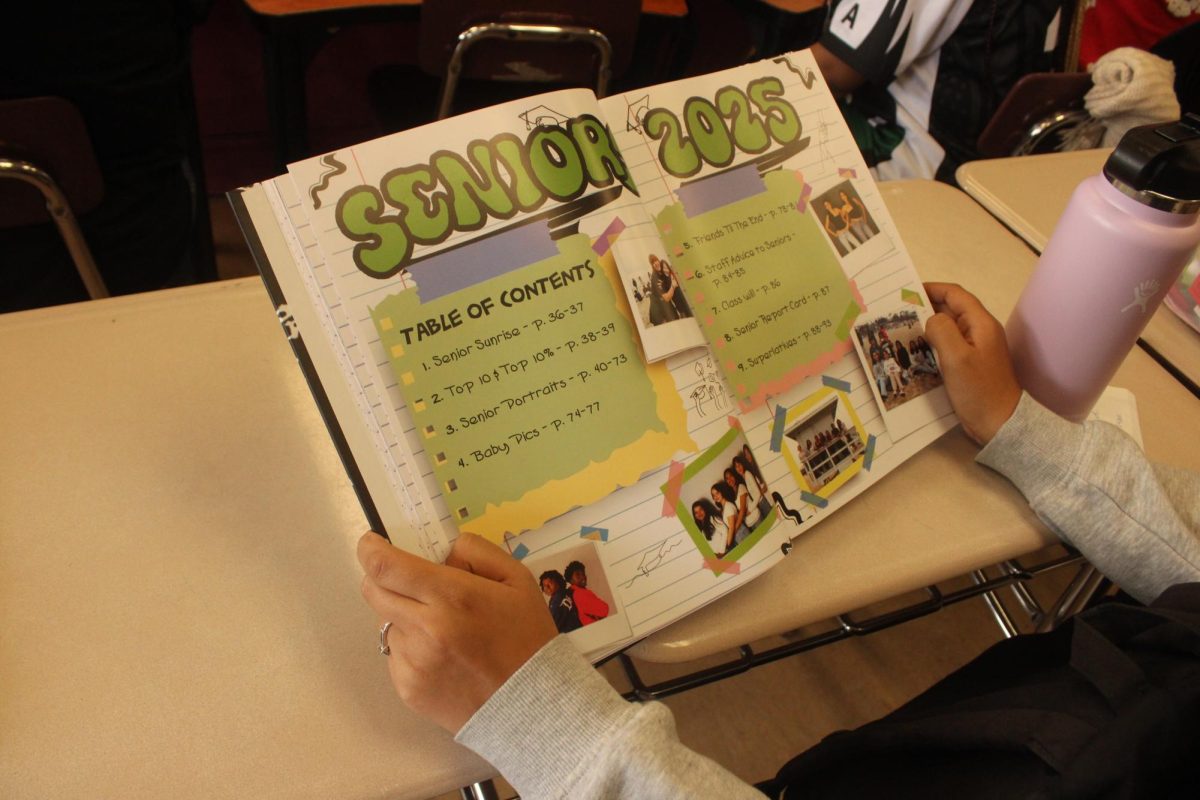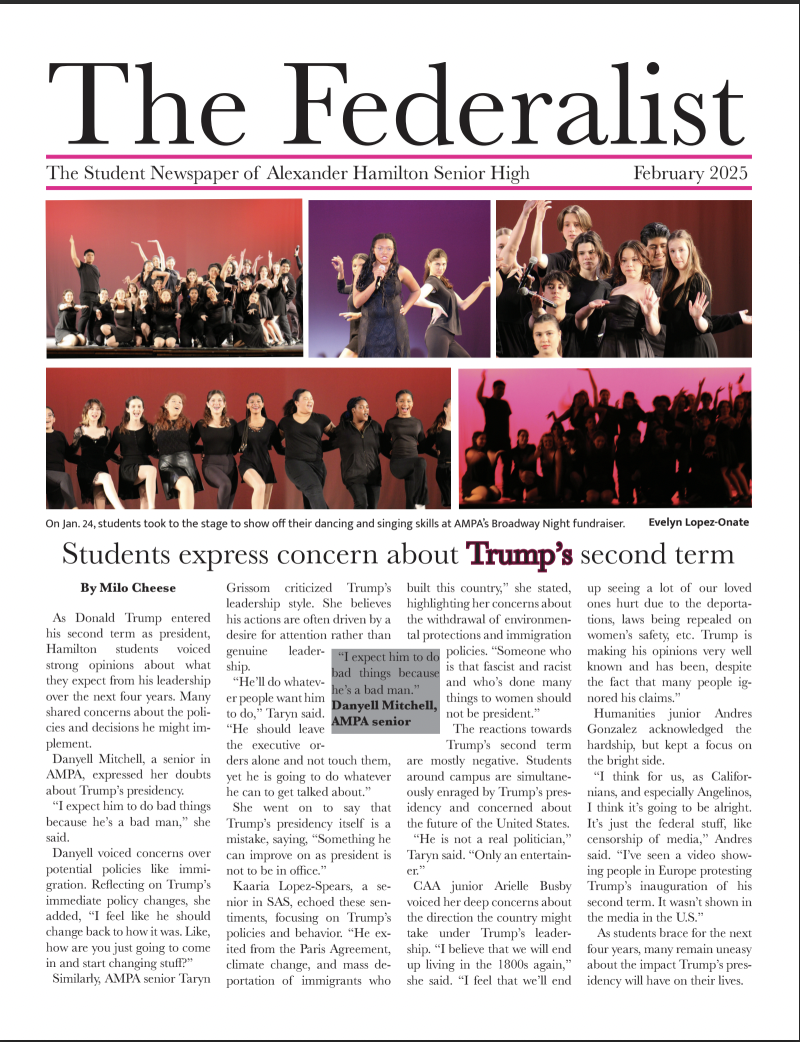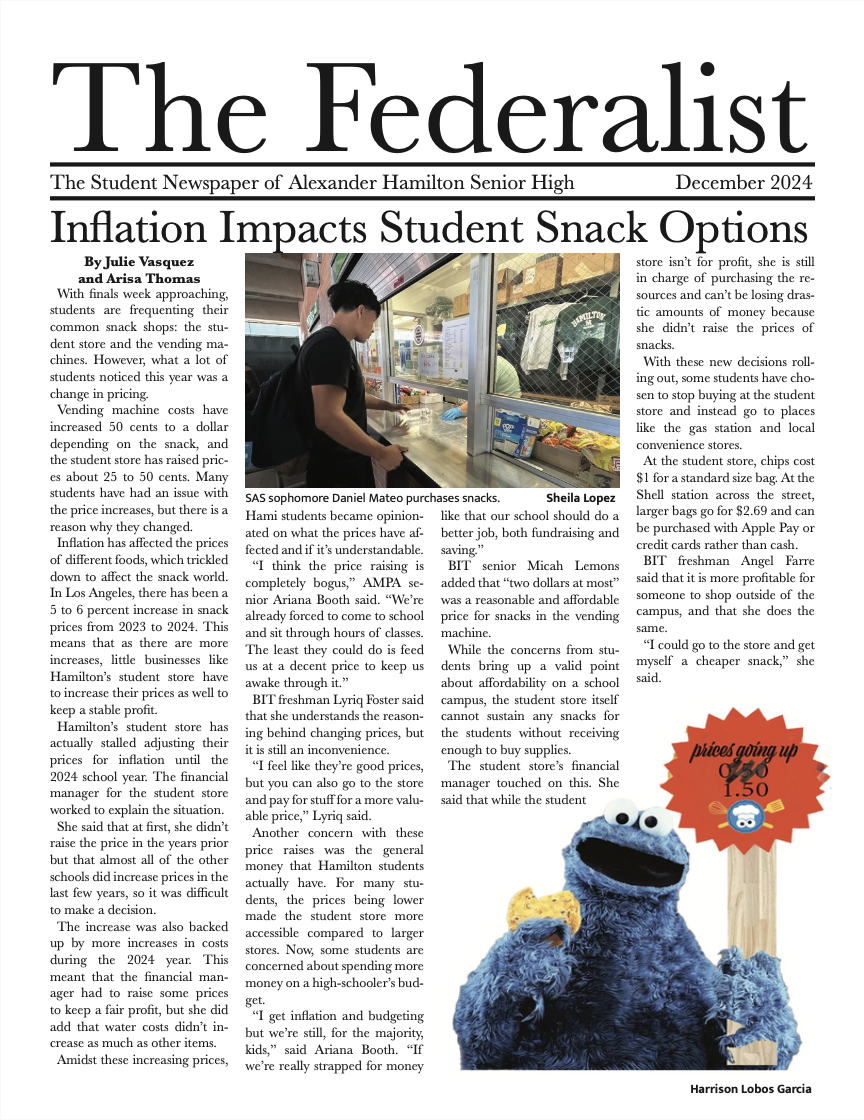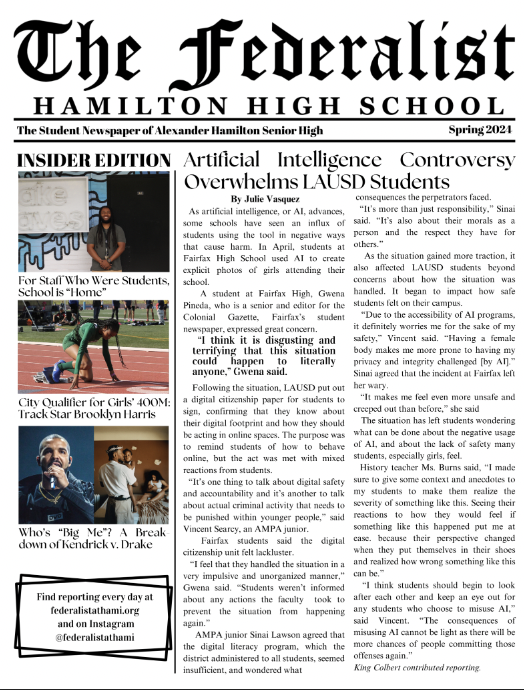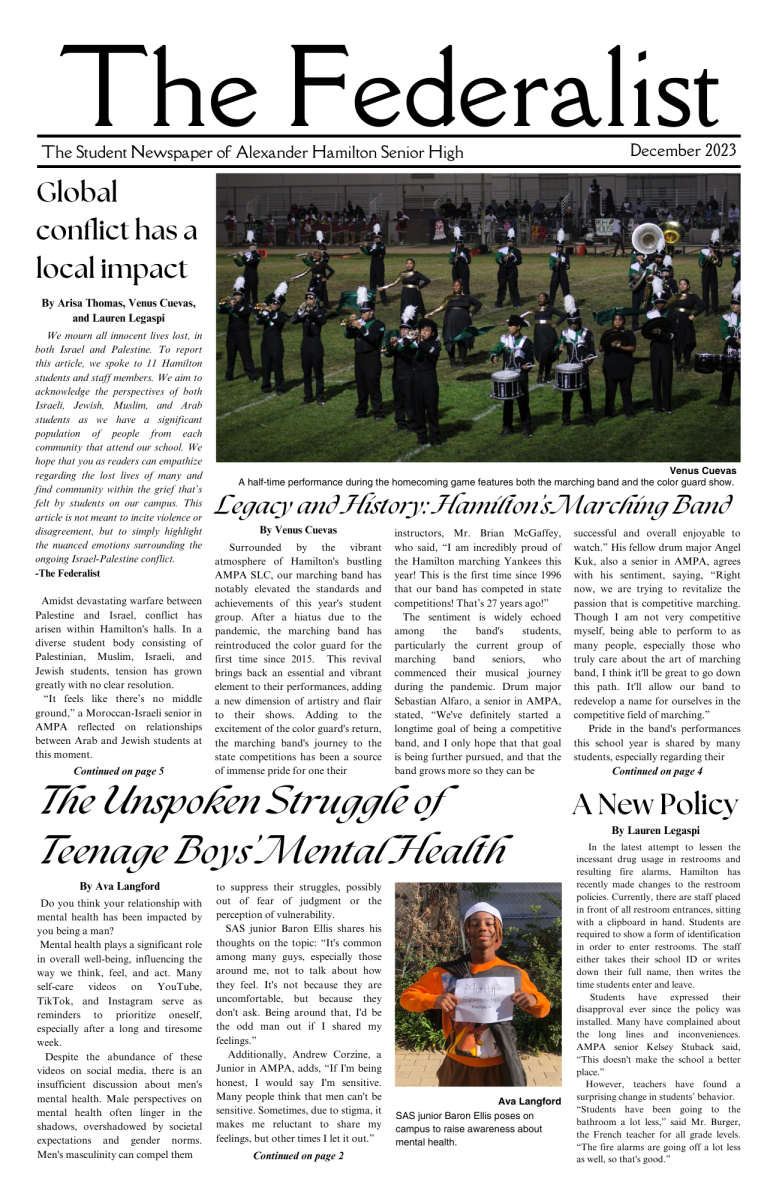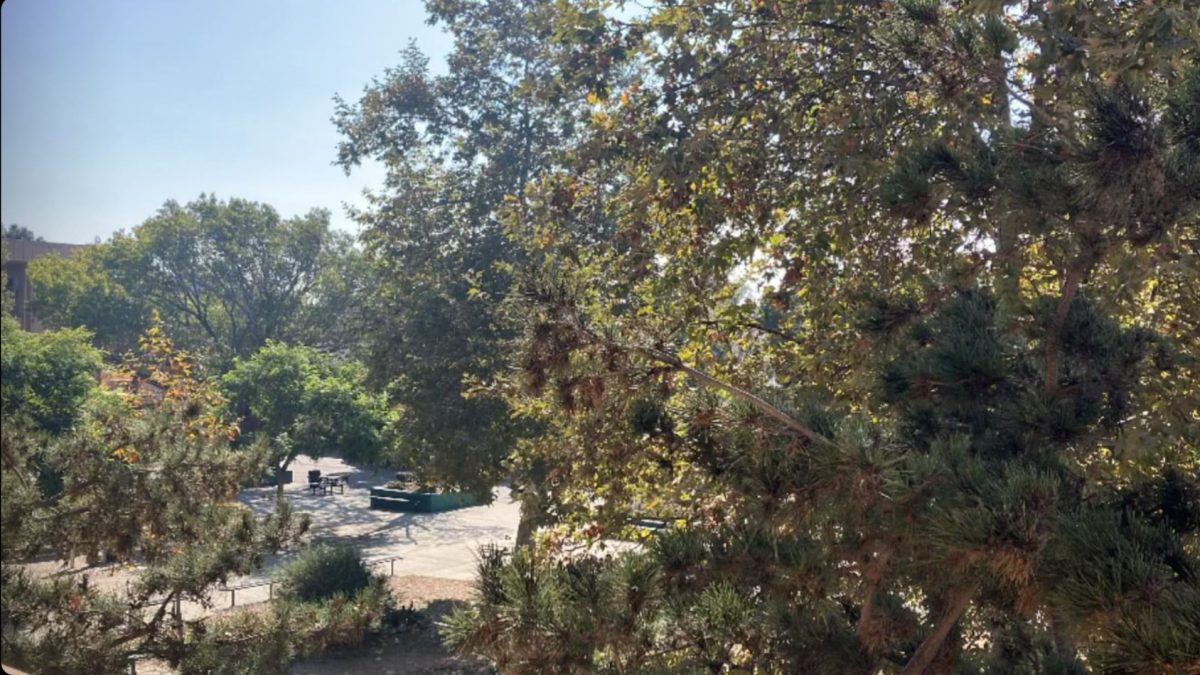When you look around the campus of Hamilton, you’re instantly met with nature. Tall trees, blooming flowers, all filled with various wild life. A campus filled with the serenity of nature enhances social, learning, and emotional ability. That serenity and wonder, however, is usually not kept looking its best. The reality of this campus is that despite its natural green spaces, it’s filled with a lot of trash and pollution.
Students on campus sometimes forget the effort that is put into the school and maintaining its appearance. Hamilton has a large audience when it comes to the musical theater, tourists, and other cherished visitors, and therefore the campus should look presentable. However, litter clutters the grounds, planters, and buildings of the campus wherever you look—remains of the school lunch on the tables, wrappers and discarded food on the ground, even personal items such as homework and pencils litter the floors.
While outside at nutrition or lunch, students tend to be so caught up in their conversations and activities that they forget to clean up after themselves. Because of this, the staff around the school have to work harder than usual to keep this campus clean. They are humans, too! Even though they may take pride in the school and its campus, it still gets hard when they have to clean up the campus alone. It’s important to understand the causes of the mass littering around campus, and the negative impacts that occur when the campus is filled with litter and pollution.
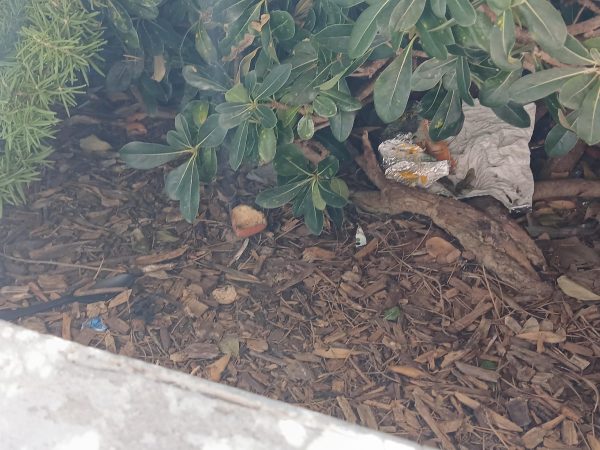
One outcome of trash being thrown around the campus is the fact that the drainage systems get clogged with it. Do you remember those days when it was raining on campus, and there was a massive puddle in the middle of the quad? Usually, drainage systems make sure that those puddles don’t get too big. However, due to the excessive amount of trash and litter being thrown onto the ground and flowing into the systems, it takes longer for the water to drain out, leaving giant puddles on campus that make traveling to classes harder while it is raining. Of course, if the trash is completely cleared, the drainage system won’t magically clear up puddles instantly. However, it would definitely speed up the process, creating a safe path for students to travel their classes.
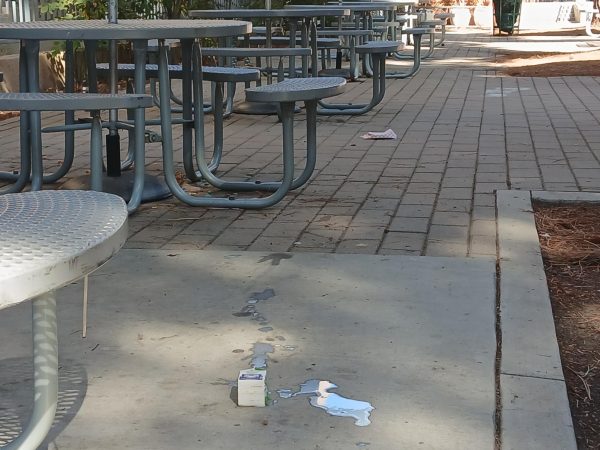
While the environmental risks of keeping litter on campuses are terrible, the trash on surfaces where students study and eat is just unsanitary. Especially at the cafeteria, many students leave the remains of their school lunch on the tables—sometimes the food isn’t even on the tray. Leaving stray food and trash on the surfaces where students eat is terribly unsanitary; it causes sicknesses and infections to erupt due to contaminated surfaces that aren’t clean. Hamilton not only prides itself on its campus but its students, as well. Safety always comes first.
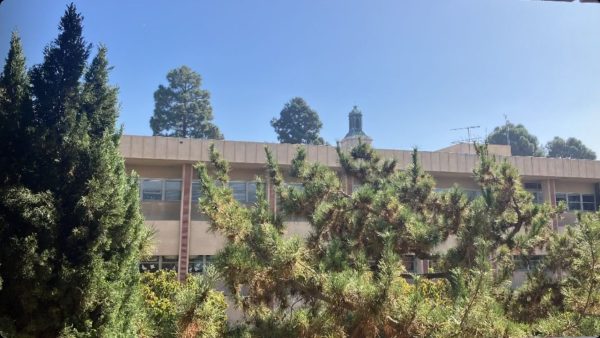
So, how can students help keep these spaces clean? Picking up trash and items after yourself is a great start; just by cleaning your own trash, you can clean up most of the areas. Next, if you are able to, you can help by putting trash in the proper reciprocals when you see it, such as small wrappers or pieces of paper. It may seem small, but just by cleaning up after ourselves, we can keep the campus a little cleaner and the nature a little happier.

